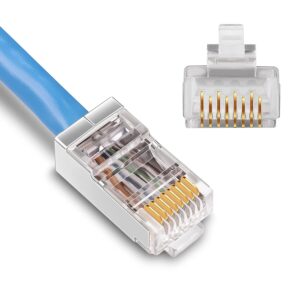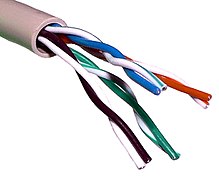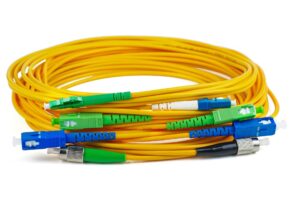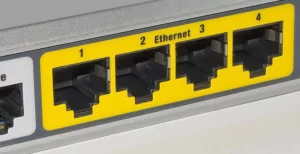In today’s age of networking, Ethernet plays a vital role in connecting devices together and enabling good communication. However, not all Ethernet standards are created equal. We have 10 Ethernet, 100 Ethernet (fast Ethernet), and 1000 Ethernet (gigabit Ethernet), and each of them has a different maximum speed of transmission.
In this article, we will delve into the differences between 10/100 Ethernet and 1000 Ethernet (also known as Gigabit Ethernet) to help you make informed decisions about your networking needs.
What is 10/100 Ethernet?
10/100 Ethernet, also referred to as “Fast Ethernet,” is an ethernet standard that surport data transfer speed up to 100Mbps. It is a widely adopted networking standard that has been the backbone of data transmission for over two decades. It was standardized by the Institute of Electrical and Electronics Engineers (IEEE) in 1995.

10/100 Ethernet uses the RJ-45 connector to connect devices to the network. This connector facilitates data transfer at speeds of either 10 or 100 megabits per second (Mbps), depending on the specific implementation.
What is 1000 Ethernet?
1000 Ethernet, also known as “Gigabit Ethernet,” is an Ethernet standard that supports data transfer speeds of up to 1000 Mbps (1 Gbps). It represents a significant advancement in network speeds and performance. It was standardized by the IEEE in 1999.
Like its predecessor, Gigabit Ethernet uses RJ-45 connectors, which ensure compatibility with existing network infrastructure. It introduces remarkable improvements in data transfer speeds, providing a substantial boost to network capabilities.
10/100 Ethernet Vs. 1000 Ethernet: Key Comparisons
| Parameters | 10/100 Ethernet | 1000 Ethernet |
|---|---|---|
| Cable type | Twisted pair cable | Twisted pair, Fiber optic cable |
| Speed | 100 Mbps maximum | 1Gbps maximum |
| Coverage | 100 meters maximum | 100 meters with twisted pair. Hundred of Kilometer with fiber optic cable |
| Latency | High | Low |
| Scalability | Low | High |
| Cost | Low | High |
| Connector | RJ-45 | RJ-45 |
1) Cabling type
When it comes to cabling, 10/100 Ethernet commonly relies on twisted-pair cables. Twisted-pair cables are cost-effective and suitable for short to medium distances. It supports a distance of up to 100 meters.

On the other hand, Gigabit Ethernet supports both twisted pair and fiber optic cables, with fiber optic cables being the preferred choice for long-range and high-bandwidth applications. Fiber optic cables can span up to 100 kilometers.

2) Speed
The most significant difference between 10/100 Ethernet and Gigabit Ethernet lies in data transfer speeds. While 10/100 Ethernet offers speeds of 10 or 100 Mbps, Gigabit Ethernet can reach up to 1000 Mbps (1 Gbps). This dramatic speed difference translates into faster file transfers, smoother media streaming, and improved network responsiveness.
3) Connection Ports
In terms of physical structure, 10/100 Ethernet and Gigabit Ethernet ports appear similar, both utilizing RJ-45 connectors. However, Gigabit Ethernet ports are designed to handle higher data rates and may have additional internal circuitry to support the increased speed.

4) Cost
When considering costs, 10/100 Ethernet offers a more budget-friendly solution due to its widespread availability and mature technology.
Gigabit Ethernet, on the other hand, can be more expensive, especially when utilizing fiber optic cables. However, with technological advancements and increasing demand, the price difference has become less significant over time.
5) Application
10/100 Ethernet is suitable for many everyday applications, such as browsing the internet, sending emails, and general office use. It is commonly found in small to medium-sized businesses.
Gigabit Ethernet, with its significantly higher speeds, excels in bandwidth-intensive applications such as large file transfers, video conferencing, and media streaming. It is commonly deployed in enterprises, data centers, and organizations with high-demand networking requirements.
6) Coverage
In terms of coverage, both 10/100 Ethernet and Gigabit Ethernet can cover similar distances using twisted-pair cables (100 meters max). However, Gigabit Ethernet’s utilization of fiber optic cables extends the network range significantly, making it suitable for long-distance connections, even those spanning kilometers.
10/100 Ethernet, with its lower bandwidth capabilities and lower coverage, is often suitable for Metro Ethernet networks
7) Configuration
Configuring devices for 10/100 Ethernet or Gigabit Ethernet involves similar processes. However, when configuring Gigabit Ethernet, it’s important to ensure that all network devices, including routers, switches, and network interface cards, support Gigabit speeds to fully leverage its capabilities.
8) Scalability
Gigabit Ethernet provides a more future-proof solution. As network demands grow and technology advances, Gigabit Ethernet’s higher speeds and broader bandwidth can accommodate increasing data requirements and ensure network scalability.
9) Latency
The round-trip time, often referred to as latency, is a critical factor in network performance. With its higher data transfer speeds, Gigabit Ethernet reduces latency, leading to quicker response times and enhanced real-time application performance compared to 10/100 Ethernet.
Upgrading from 10/100 to 1000 Ethernet
If you have a 10/100 Ethernet network and want a higher transmission speed, you can actually upgrade to Gigabit Ethernet and start enjoying the higher transfer speed that gigabit Ethernet provides. Make the following considerations before upgrading your network
Considerations for network infrastructure
Before upgrading to Gigabit Ethernet, it’s essential to consider the following:
- Evaluating existing hardware compatibility: Ensure that your network devices, including switches, routers, and network interface cards, support Gigabit Ethernet.
- Assessing switch and router capabilities: Verify that your switches and routers can handle Gigabit speeds and have sufficient ports to accommodate the upgrade.
- Analyzing cable infrastructure requirements: Determine whether your existing cabling infrastructure supports Gigabit Ethernet or if upgrades to fiber optic cables are necessary.
Benefits of Upgrading to Gigabit Ethernet
Upgrading to Gigabit Ethernet offers several benefits:
- Enhanced network speed and performance: Gigabit Ethernet provides a substantial increase in data transfer rates, resulting in faster network performance and improved productivity.
- Support for bandwidth-intensive applications: With Gigabit Ethernet, bandwidth-hungry applications, such as high-definition video streaming or large file transfers, can run smoothly without bottlenecks.
- Improved file transfers and data backups: Gigabit Ethernet’s higher speeds enable faster and more efficient file transfers and data backups, reducing waiting times and enhancing overall workflow.
Potential challenges and solutions
During the upgrade process, you may encounter challenges such as compatibility issues and network downtime. Here are some potential challenges and their corresponding solutions:
- Addressing potential compatibility issues: Verify the compatibility of your existing devices with Gigabit Ethernet and consider upgrading or replacing incompatible components.
- Mitigating network downtime during the transition: Plan the upgrade carefully to minimize network downtime. Implement strategies such as phasing the upgrade or scheduling the transition during periods of low network activity.
- Upgrading equipment gradually or in stages: If a full-scale upgrade is not feasible, consider upgrading critical components first and gradually expanding the Gigabit Ethernet infrastructure over time.
Conclusion
Understanding the differences between 10/100 Ethernet and Gigabit Ethernet is important if you are seeking to optimize your network connectivity. We have explored the differences in cabling types, data transfer speeds, port structures, costs, applications, coverage, configurations, scalability, round-trip implications, and latency. Armed with this knowledge, you can make informed decisions when choosing between the two Ethernet standards.
As technology advances and network demands evolve, it is essential to stay informed about emerging Ethernet speeds and emerging technologies to adapt and ensure optimal network performance in the future.

I am a passionate Networking Associate specializing in Telecommunications.
With a degree in Electronic engineering, I possess a strong understanding of electronic systems and the intricacies of telecommunications networks. I gained practical experience and valuable insights working for a prominent telecommunications company.
Additionally, I hold certifications in networking, which have solidified my expertise in network architecture, protocols, and optimization.
Through my writing skills, I aim to provide accurate and valuable knowledge in the networking field.
Connect with me on social media using the links below for more insights.
You can contact me using [email protected] or connect with me using any of the social media account linked below




Great article! It was really helpful to understand the differences and benefits between 10/100 Ethernet and 1000 Ethernet, especially in everyday terms.
Thank you for giving us feedback; Linetogel